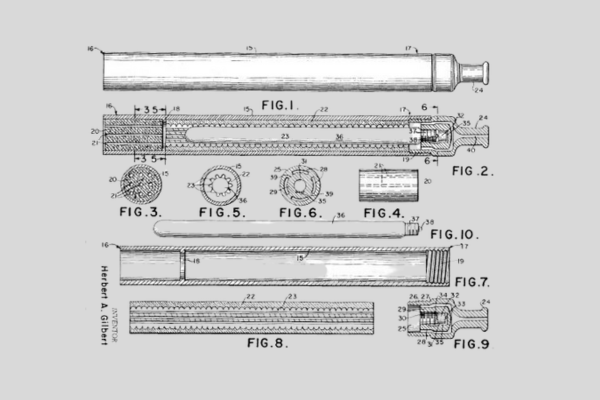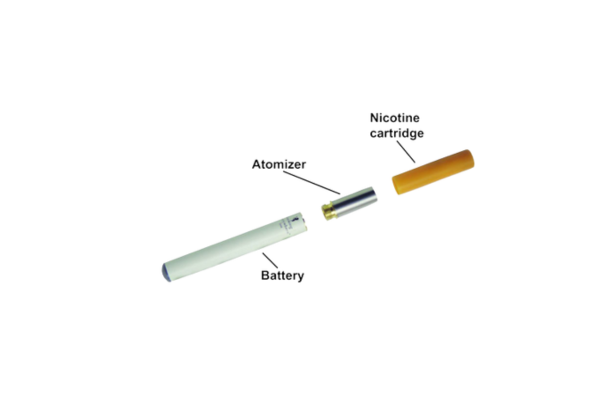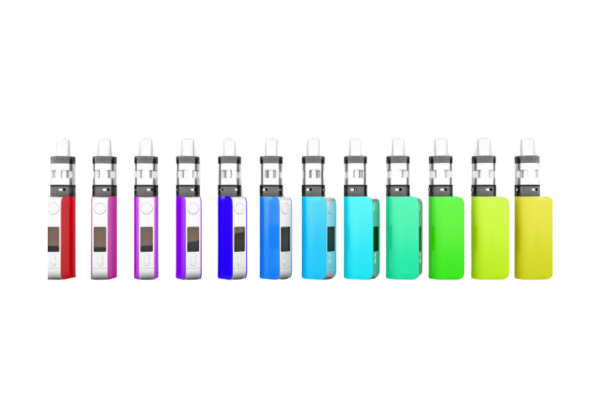Introduction
Electronic cigarettes have come a long way since their inception in the 1960s. Throughout the long history of e-cigarettes, we delve into the past, trace the modern origins of e-cigarettes, and look to the future of this ever-evolving industry. From technological advances to regulatory challenges, this article provides a comprehensive overview of all aspects of e-cigarettes. Let’s embark on a journey together to discover how e-cigarettes are changing smoking habits and what the future holds for the world of e-cigarettes.
The past of vapes
Early prototypes:
In 1927, Joseph Robinson developed and patented an electronic vaporizer designed for drugs. Although the patent was granted in 1930, this particular device was never marketed, and in 1930, the United States Patent and Trademark Office recorded a patent describing a device for heating pharmaceutical compounds to produce inhalation vapors.
The birth of early vapes:
The origins of early e-cigarettes can be attributed to American Herbert A. Gilbert, who filed a patent application in 1963 for what he called a “smokeless, non-tobacco cigarette”. His invention focused on replacing the act of burning tobacco and paper with heated, moist, and flavored air to produce a nicotine-free, flavored vapor. Although Gilbert’s patent was granted in 1965, Gilbert’s innovative concept was ahead of its time and could not be commercialized due to the prevalence of traditional smoking.

The modern vape
The birth of the modern vape:
Hon Lik, a Chinese pharmacist and inventor, is regarded as the inventor of the modern electronic cigarette. His motivation for this invention stemmed from quitting smoking after his father, a smoker, died of lung cancer. His father’s death made him realize the great danger of traditional tobacco and he was determined to create an electronic replacement device that could reduce the harmful effects of tobacco to quit smoking.
In 2001, Hon Lik came up with the idea of using a high-frequency piezoelectric ultrasonic transmission element to convert a pressurized liquid stream containing nicotine into a vapor that mimics the form of smoke.
In 2003, Hon Lik patented his modern e-cigarette design and registered the brand name “Like Smoke” (meaning “like a cigarette”). He is credited with pioneering the first viable e-cigarette, offering smokers a healthier alternative to traditional smoking. Also, due to their resemblance to traditional cigarettes, “Like Smoke,” e-cigarettes are often referred to as “cigalikes”, also known as Generation E-cigarettes.

Vape technology upgrades:
As technology evolved and battery-powered heating elements replaced the original ultrasonic design, atomizers (also known by some as “tank”) were born.
The first generation of e-cigarettes often looked like traditional cigarettes and was called “cigalikes”.

The second generation of devices were larger than the first and looked like pens aka vape pens.

The third generation included mechanical mods that adjusted power and voltage.

The fourth generation is the electronic pod pod, which has interchangeable cartridges.

The future of vapes
Emerging vape technologies
Wireless charging technology
Manufacturers are already developing wireless charging technology for e-cigarettes
Mobile phone-based APP/small program
Display/record the number of puffs, power level display, fuel level display, child lock, find atomizing device, OTA online upgrade, and other functions
Growing vape market
The e-cigarette market continues to experience significant growth, driven by several key factors.
Stylish appearance
One of the driving forces behind the rise of e-cigarettes is their stylish appearance. Unlike traditional cigarettes which have a uniform and functional design, e-cigarettes come in a variety of sleek and modern designs. These devices often resemble pens, USB drives, or high-end gadgets, which makes them more appealing to a younger, tech-savvy crowd.
Customizable flavors
Another factor contributing to the growth of the e-cigarette market is the variety of customizable flavors that users can choose from. Traditional tobacco products offer limited choices of flavors, usually limited to menthol or tobacco. In contrast, e-cigarettes offer a wide range of flavor options, from fruit and dessert varieties to exotic blends. This customization allows users to tailor the e-cigarette experience to their personal preferences, making it more enjoyable and enticing.
Innovative features
E-cigarettes are also popular for their innovative features. Many e-cigarette devices are equipped with cutting-edge technology such as adjustable airflow, temperature control, and interfaces. Some even come with Bluetooth connectivity and smartphone apps for monitoring usage and managing settings. These features not only enhance the user experience but also cater to tech-conscious consumers who enjoy integrating technology into their daily lives.
Reduced harm compared to traditional tobacco
One of the most important selling points of e-cigarettes is their potential for harm reduction compared to traditional tobacco. While e-cigarettes are not completely risk-free, they are often considered less harmful because they do not involve combustion, which produces harmful tar and many of the toxins associated with smoking. This reduction in harm has led many smokers to consider switching to e-cigarettes as a safer alternative, thus contributing to the growth of the market.
Market transformation
The most transformative aspect of the e-cigarette market growth is the gradual shift from traditional tobacco products to e-cigarettes. This shift is indicative of changing consumer preferences and growing awareness of the health risks associated with smoking traditional cigarettes. E-cigarettes are emerging as a strong competitor to traditional tobacco, especially among younger generations who are more health-conscious and open to technological innovation.
Ongoing policy regulation
Since the start of modern e-cigarettes, regulation around the safety of e-cigarettes has been a topic of discussion.
Whether vapes are causing the “EVALI” debate.
The outbreak of “EVALI” in the United States in late 2019 prompted several countries, including the United States, to impose strict bans on flavored e-cigarettes, allowing the sale of only tobacco and menthol varieties. In contrast, many countries and regions have not enacted restrictive policies on e-cigarettes for a variety of reasons. This difference can be attributed to two key factors. The first is that there has been no significant “EVALI” phenomenon outside of the United States. The second is that, to date, there is no direct evidence that e-cigarettes are the ultimate cause of “EVALI”.
Vape policy and regulation
E-cigarette policies and regulations are subject to change over time. The following are some of the policies and regulations that are currently common in countries around the world.
Age restrictions:
Many countries and regions have implemented age restrictions to prevent minors from purchasing and using e-cigarettes. These restrictions relate to the most minor legal age to smoke e-cigarettes, which is usually 18 or 21 years old.
Product labeling and packaging:
Regulations require e-cigarette products to be labeled. This includes disclosing nicotine content, health warnings, and ingredient information.
Flavor Ban:
Flavor bans have been introduced in some places due to concerns about flavored e-cigarettes appealing to younger users. These bans may cover all flavors or only specific types, such as fruit or candy flavors.
Nicotine concentration limits:
Some countries and regions have placed limits on the nicotine concentration allowed in e-cigarette liquids, and e-cigarette importers should be concerned about and follow this regulation.
Advertising and promotion restrictions:
Regulations restrict the way e-cigarettes are marketed and advertised, especially to youth. This includes restrictions on social media marketing and sponsorship.
Online sales restrictions:
Some countries restrict the sale of e-cigarettes online, and some countries impose restrictions on the online sale of e-cigarettes and related products, such as requiring age verification before buying.
Product standards and certification:
Regulations need e-cigarettes to be manufactured in strict accordance with required quality and standards and to get certifications required for e-cigarettes.
Taxes:
As a product that is as regulated as tobacco, imported e-cigarettes are subject to special duties. It is important to note that tariffs on e-cigarettes vary from country to country and importers need to understand this before importing e-cigarettes. to avoid excess costs.
Prohibition of public use:
Various countries and regions have banned or restricted the use of e-cigarettes in public places, such as indoor areas, public transportation, and schools, to protect non-smokers from second-hand vapor.
Product registration:
Some countries need manufacturers, importers, and retailers to register their e-cigarette products with the relevant authorities to ensure compliance with regulations.
Conclusion
In conclusion, e-cigarettes have undergone tremendous changes from early prototypes to modern-day e-cigarettes. Stylish designs, customizable flavors, innovative features, and the promise of reduced harm compared to traditional tobacco have fueled the continued growth of this market. As emerging technologies such as wireless charging and mobile apps are further integrated into the e-cigarette space, the industry will continue to evolve, adapting to the changing regulatory environment while offering alternatives to traditional smoking






